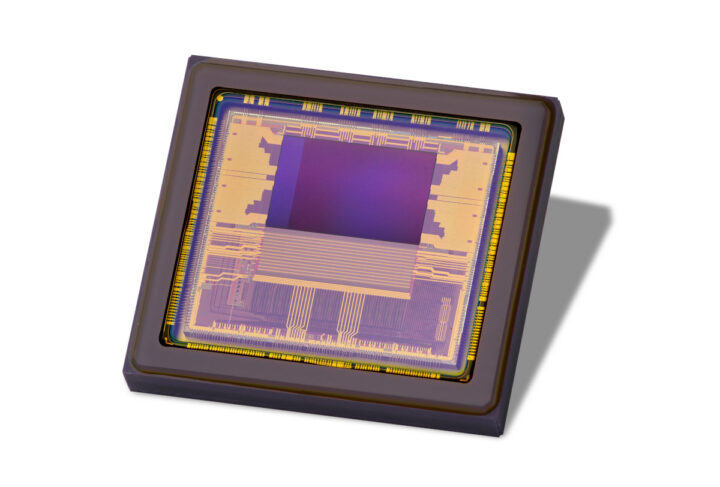Teledyne e2v Hydra3D+ is a high-resolution Time-of-Flight (ToF) CMOS image sensor with 832 x 600 resolution, designed for real-time 3D detection and measurement without motion artifacts.
The first ToF sensor I used was an STMicro VL53L0X ranging sensor that could measure distances accurately and quickly up to 2 meters away, then the company started to launch multi-zone ToF ranging sensors such as the VL53 that enabled new features such as touch-to-focus, multiple-target identification, flash dimming, or video tracking assistance, and one variant used for human detection. But the 832×600 resolution of Hyrdra3D+ brings even more interesting use cases with the ability to create 3D maps in real time.
Hydra3D+ ToF sensor specifications:
- Sensor
- Resolution – 832 x 600 pixels
- Aspect Ratio – 4 : 3
- Size type – 2/3″ (10.3 mm diagonal)
- Pixel type/size – square – Three-tap global shutter – gated global shutter / 10 μm
- Maximum frame rate @ 12 bits – 416.7 fps considering only readout
- FFxQE – 41% @ 850, 31% @ 940 nm in 2D greyscale mode (FF stands for Fill Factor, QE for Quantum Efficiency. See DrPi comment for an explanation)
- Transfer time – Down to 10ns
- Readout noise – 2.5 e- RMS
- Linearity – -1 / +1%
- Scalable LVDS outputs (13, 7 or 4 channels)
- Host interface – SPI
- Acquisition modes – Distance measurement and greyscale
- High Dynamic Range support
- Programmable exposure time
- Region of interests (ROI)
- Row-wise ROI: up to 4x for distance measurement, 1x for 2D greyscale image
- Column-wise ROI with 64 columns granularity
- Power consumption – 2.6 W with the following conditions: full array, 100 ns gating cycle duration (three phases), 10% duty cycle, 50% gating time
- Package – Ceramic LGA
- Temperature Range – -40°C to 105°C
Teledyne e2v lists pick and place, logistics, factory automation, and factory safety as some of the target applications. The company further explains the Hydra3D+ high-resolution ToF sensor is ideal for mid to long-range distances and/or outdoor applications such as automated guided vehicles, industrial robots, surveillance, and building construction.
Documentation, samples, and development tools are available but only upon request after contacting the company. Teledyne e2v also provides proprietary modeling tools for the evaluation of the Hydra3D+ sensor. Further details may be found on the product page and the press release.
Thanks to TLS for the tip.

Jean-Luc started CNX Software in 2010 as a part-time endeavor, before quitting his job as a software engineering manager, and starting to write daily news, and reviews full time later in 2011.
Support CNX Software! Donate via cryptocurrencies, become a Patron on Patreon, or purchase goods on Amazon or Aliexpress






I’m not sure about the FFx part, but my guess would be “Full Frame”. QE is almost surely Quantum Efficiency.
Found FFxQE here:https://www.researchgate.net/figure/I-ntra-pixel-response-of-STAR-1000-and-HAS-obtained-by-knife-edge-method-An-improved_fig4_234454680
It stands for “fill factor and quantum efficiency”. Still no idea 😉
That makes sense. Fill factor is the percentage of the surface area of the of the detector that is active (detects photons). Quantum efficiency is a measure of the probability that a photon hitting a detector is actually detected, so FFxQE is a total measure of how much of the returned light that is focused on the detector array will actually be detected.
Thanks for the explanation, it makes sense indeed.
Fill Factor : ratio of the pixel sensitive area / the full pixel area.
100% means the sensitive area covers the pixel area (only with back side illuminated sensors). Front side illuminated sensors have transistors, metallic traces, isolation barriers… nearby the sensitive area.
Quantum Efficiency : ratio of photons converted to electrons.
With black and white sensors, QE is quite high. With color sensors there are 3 (quite low) QEs, one per color (with RGB pixels).
Thank you!
ST is working on something similar too: https://www.st.com/en/imaging-and-photonics-solutions/vd55h1.html
Pricing is unknown but man may wonder if this is to replace 3d cameras in cheap robots.
Looks very interesting but i fear the price would put it out of reach for a hobby enthusiasts.
Looks like there is a lot of new designs when it comes to 2d ToF sensors, so there is hope.